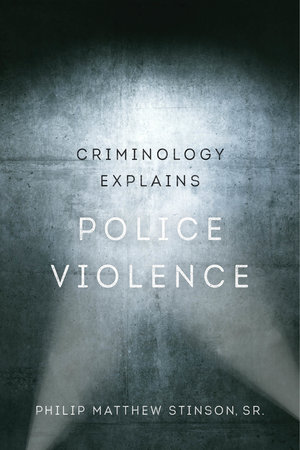This guest post is part of our ASC blog series published in conjunction with the meeting of the American Society of Criminology in San Francisco, CA, November 13-16.
By Philip Matthew Stinson, Sr., author of Criminology Explains Police Violence
Until about five years ago, most people never gave much thought to the problem of police violence in the United States. That changed with the police homicides of Michael Brown in Ferguson, Missouri, Tamir Rice in Cleveland, Ohio, Walter Scott in North Charleston, South Carolina, and several other cases that garnered national media attention. While these cases brought widespread calls for criminal justice reforms, the reality is that little has changed in policing at the more than 18,000 state and local law enforcement agencies that employ more than 700,000 sworn officers throughout the country.
Each year, on-duty police officers across the United States shoot and kill approximately 1,000 people. Most of these shootings result in no criminal charges being brought against an officer, because investigations determine that the shootings were legally justified uses of deadly force. Police officers are legally justified in using deadly force if an officer has a reasonable apprehension of deadly force or serious bodily injury being imposed against an officer or someone else. There is no requirement in most states that a police officer only use deadly force when it is necessary to do so. In many instances officers have been cleared of criminal wrongdoing, but at the same time investigators determined that a police shooting was inappropriate, unnecessary, and in violation of agency policy.
By my count, in the past fifteen years there have been 107 nonfederal sworn law enforcement officers who have been charged with murder or manslaughter resulting from an on-duty shooting. Of those 107 officers, to date only 38 have been convicted of a crime (16 by guilty plea, 22 by jury trial, and none convicted by a bench trial). In cases where an officer has been convicted, it is often for a lesser offense and only four officers have been convicted of murder as a result of one of these on-duty police shootings. The criminal cases for 46 of the officers ended in a non-conviction: 24 were acquitted at a jury trial, eight were acquitted at a bench trial, four cases were dismissed by a judge, eight cases were dismissed by a prosecutor, one officer received a deferred adjudication, and in one instance no true bill was returned from a grand jury. The criminal cases for 23 of the officers are still pending today.
Prosecutors are often reluctant to file charges against a police officer because these are difficult cases to “win,” and most prosecutors are obsessed with winning. And juries—and even judges sitting as trier of fact at a bench trial—are seemingly reluctant to second-guess the split-second life-or-death decisions of police officers who use deadly force to kill someone. This is true even in the cases where evidence clearly demonstrates that an officer was not legally justified in using deadly force. Police reforms will be meaningless so long as a blind eye is turned to the 1,000 times each year where on-duty police officers across the United States shoot and kill civilians.

